Prerna Dokania
Economics PhD Candidate, GWU
Early childhood care and education (ECCE) is a growing focus sector in developing countries. Quite like the HeadStart program in the USA, developing countries like Bangladesh, India, Sub-Saharan Africa, Pakistan have had some ECCE policy in place. This sector has gained prominence in recent years due to the proven importance of early childhood human capital formation in the long run labor market and developmental outcomes. India’s early childhood education program, called the Anganwadi system, is one such policy framework within which children from age 0-6 years and pregnant and lactating women are supported in the form of supplementary nutrition, immunization services and health and education provision, monitoring and guidance. My summer research project aimed at surveying such ECCE providers, referred to as Anganwadi workers, from a semi-urban district – Begusarai, in Bihar, India. The objective was to survey a randomly selected sample of ~ 450 Anganwadi workers and collect data on their perceptions related to functioning of the Anganwadi system at the local level and assess their content-based knowledge of ECCE activities.
In this blog, I want to share my field work experiences and some tips for future survey-based projects.
Bihar is one of the biggest states in India supporting ~ 9 percent of India’s population and infamously part of the BIMARU states (translated in Hindi as ‘sick’ states/ economically disadvantage states). As per the latest national family survey in India, Bihar has an average fertility rate of 3 children per woman compared to the country’s average of 2. This makes Bihar a suitable candidate for understanding the challenges faced by the ECCE workers at the local level. This was going to be my first time in Bihar, even though I had spent my early teens in Jharkhand, a state that was separated from erstwhile Bihar in the year 2000. People in Bihar live in a predominantly patriarchal society set-up with a less than 5% female labor force participation rate. I had anticipated that surveying groups of women in Bihar could be challenging given the cultural/social barriers and had raised quite a few eyebrows for picking Begusarai, Bihar as my study site.
Contrary to my priors, I was pleasantly surprised to witness women at the forefront of the social welfare department (the government body responsible for ECCE policy implementation). The organizational structure is as follows: a district is typically divided into projects, which are further subdivided into sectors, and Anganwadi centers, respectively. Given the target population of the policy, most of the organizational leadership in the department were comprised of women. I conducted surveys in randomly selected sectors and, hence, I had to coordinate with multiple office bearers before planning every survey session. The women leaders I met were very driven, knowledgeable, and resourceful. They had several questions for me; What is the purpose of your survey? Why do you want to survey Anganwadi workers in the absence of their supervisors? What is the potential outcome of your research? Why did I choose their project for my study? These questions felt like a blessing. The project officers seemed interested in the research and had several stories to share with me. Some of them had a lot of encouraging insights on my survey questions and experiment implementation as well. I am grateful to each one of the project heads and the sector heads for helping me organize the survey sessions with ease. One important field-survey lesson here was that I could have prepared an informal questionnaire for such interactions. I also realized that preparing for field-work implementation takes a lot more time (other than writing surveys or research hypothesis) and being at the study-site one-two weeks in advance is instrumental for securing official permissions, scheduling, procuring material and training your team.
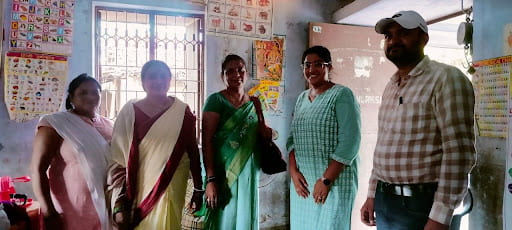
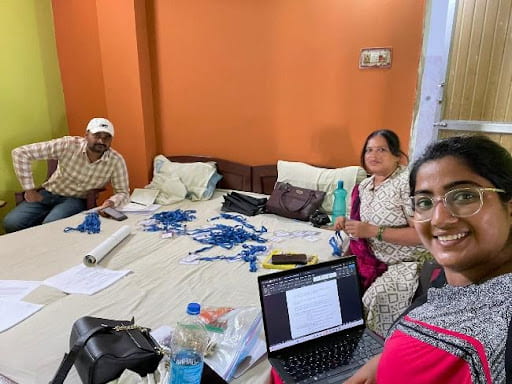
The one with the team! Pilot Day; Preparing for Day One
An obvious tip that all field researchers have in their experience book is – Pilot your survey! Revise the survey! I could not agree more. I would say, if possible, Pilot again and revise yet again! I saw my survey material metamorphose in one week. I had spent at least a month refining my survey questions sitting behind my laptop in the comfort of my office in Washington DC. But the perspective you get from the field pilot experience is just four-fold. The interaction with respondents is crucial to understand how they are perceiving each question. I had hired a local field management team, and together we spent hours discussing each question in detail and modifying the exact language of the questions. After the pilot, we revisited our surveys. Some questions were dropped, some were enhanced with pictures/emojis, and some were rearranged to facilitate the survey design.
Another big lesson that I learnt from this field experience is regarding survey language translation. My surveys were going to be in Hindi, but I had been editing the English version more than the Hindi version while I was off-site. I had discussed the English version of surveys with my academic advisors and colleagues. However, since I had the benefit of knowing Hindi, I feel I could have saved a lot of time if I had been editing the Hindi version of my surveys instead of perfecting the English version first and then translating it to Hindi. Thus, if the researcher knows the local language, I highly recommend making the edits in the local language first and then translating it into English for IRB purposes. Maybe, being an ambidexter would have helped!
Once we got the ball rolling, everything started falling in place. Every day was a new location, sometimes covering two sessions in a day. A lab-in-the-field project can have lots of moving pieces for a typical session, in terms of having paper forms printed, keeping cash handy for reimbursements (if the surveys are incentivized with cash payments), organizing food packets, carrying spare stationary for respondents and so on. It was a through-and-through learning experience for me and my team. You must maintain inventory of all such items, and even a simple excel sheet can go a long way to help you be organized.
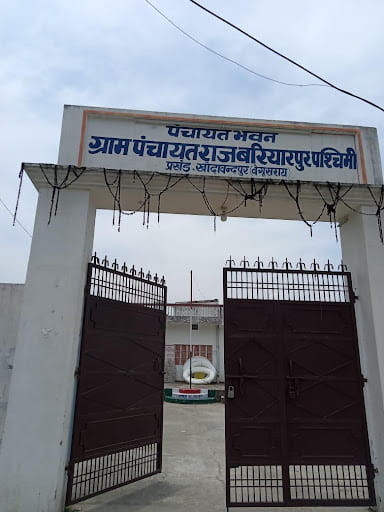
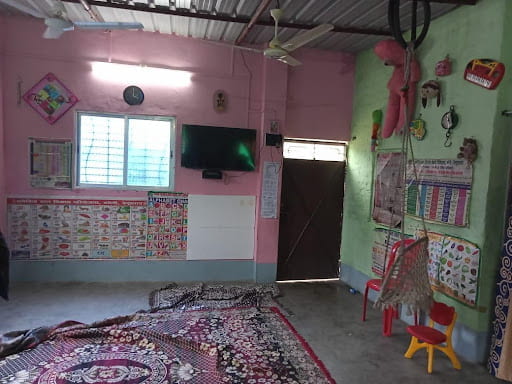
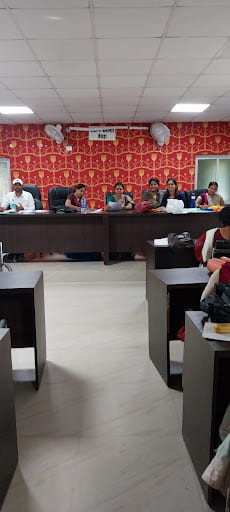
Various survey locations; Begusarai, Bihar, India.
With fieldwork, another important thing to consider is the timing of the survey. The weather was not always on our side. Initially the temperatures were as high as 95°F and as we neared completion of the project, monsoon season had hit. We even encountered waterlogging up to 2 feet on two survey occasions. One should account for such local factors before planning field-based surveys. For instance, months like March-April could be more favorable than July-August in tropical regions of India. I was running almost a week behind my schedule, but usually for larger scale projects there one should keep more buffer. Most of the study locations comprised of a small government building used for regular meetings or a close-by Anganwadi center itself. Some survey locations were spacious, some had proper seating arrangements, some had electricity, while some didn’t have such convenient features. Notwithstanding these barriers, the survey subjects and my team showed utmost resilience and cooperated. We were able to complete the planned project and surveyed 457 respondents in total.
Amidst the daily conundrum of preparing for and travelling to a new location, one constant feature was the enthusiasm of the survey respondents. Typical sessions used to be 3-3.5 hours long and often we had to wait up to 1 hour beyond the scheduled time for all invited respondents to arrive. Nevertheless, the subjects showed patience and had each other’s back as they called and insisted their fellow mates to join us sooner! There were no respondents who did not consent to participate in the study. I was most touched by the hospitality of the subjects. During one of the sessions, the respondents served us a home-cooked sumptuous meal at the end of the session. I wish I had taken a picture! In another session a respondent, who received 130 INR and a book as the final compensation from the research experiment, returned with 3 pens for me and my team to express her gratitude. It was a very humble experience, to say the least! These women who have been working for the social welfare of their communities, at a modest honorarium/stipend, were already spending their valuable time with us and still had a sense of sharing. This survey was more than just a survey for them. Somebody had come over to know more about them, discuss their work with them, and it made them feel more motivated and encouraged.
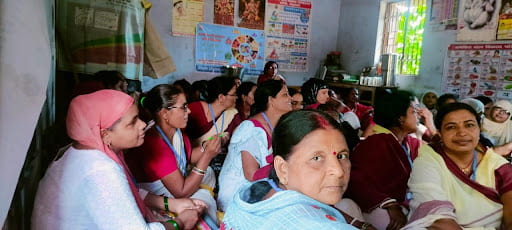
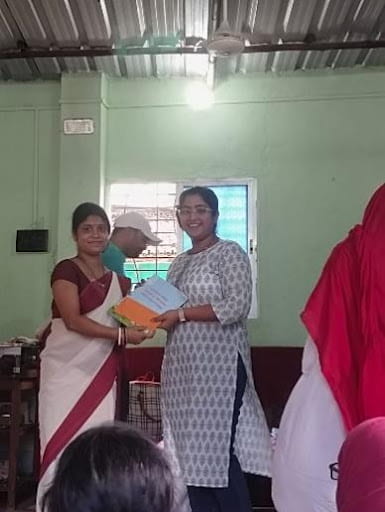
The one with respondents! (Pics shared by respondents)
As I proceed to analyze the data I have collected, I carry these wonderful memories and wish to expand the scope of my research with a follow-up study.
PS: Thank you for reading my blog! To read up more on the actual findings of this research project, stay tuned to my webpage https://sites.google.com/view/prernadokania/home.
Bio: Prerna Dokania is a PhD candidate in Economics at the George Washington University, Washington DC. She is a Sigur Center Summer 2023 Research Fellow. To learn more about her, visit her website: https://sites.google.com/view/prernadokania/home%20.

